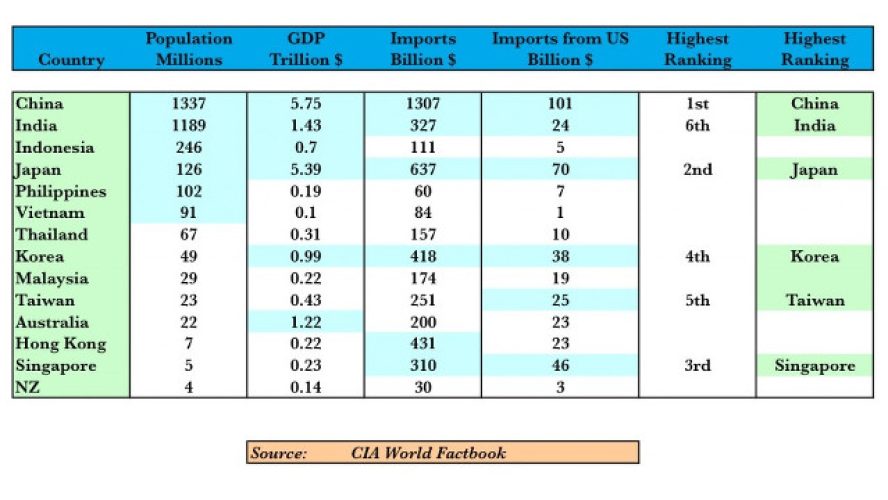Growing in the Asia-Pacific Marketplace (Part 2)
In the first entry of this 3-part series we discussed a Go Big strategy versus a Go Smart strategy, and looked at some rather surprising statistics on imports from the U.S. into various countries in the region. Yes, China and India have impressive growth rates and great potential, but if we look at 2009 import statistics into the 14 most important countries in the Asia Pacific region, we find that the major share at 63% ($247 billion) of the American exports to APAC went to developed nations such as Japan, Korea and Singapore and 37% ($148 billion) went to the developing nations.
Based on my experiences over the past quarter century of promoting American IT hardware, software, and services into 11 major country markets within APAC, during which time I have been based in Japan, Singapore and Thailand, I would suggest that growing in the APAC market provides a more complex and nuanced set of challenges than do the European or Latin American markets. This is probably the most diverse region on the planet. Cultures are even more diverse and more distinct, as are languages. Even the writing systems vary greatly, ranging from Chinese characters to Roman characters to a wide range of alphabetic scripts in India and Southeast Asia. English proficiency varies widely among countries, and among individuals within a country. While the APAC region is the world’s most dynamic economically, it has a rich mix of highly developed markets, markets in transition to the developed category, and developing markets.
It is important to consider each country on its own as one formulates and implements a go to market strategy. Success has to be built one country at a time. Relationships are exceptionally important in this part of the world. Asians have long lasting cultural, national, ethnic and religious identities and to succeed here, building relationships over time is essential. We need to do our homework and become as familiar as possible with the countries and cultures in which we do business. It is especially useful to become familiar with the etiquette in different countries so that you don’t cause offense or embarrass yourself. They typically won’t tell you what you did wrong! Most of you have Asians or Asian Americans in your companies; don’t forget to take advantage of their cultural knowledge of their particular nations and their contacts in the region.
One of the most difficult areas is determining with whom to partner and whom to hire. Because of the perceived difficulty, few Americans bother learning Chinese, Japanese, or other languages, and thus one can tend to feel comfortable hiring and partnering with those who have the best English skills. We may have well-honed evaluation skills for partners and personnel in the Western context, but may not be able to ‘read’ Asians as well. We continually need to be a better job of communicating from our side, so that we’re surprised less often when a deal doesn’t go through. Asians generally adopt a subtle, less direct approach, in delivering messages, and are often reticent to deliver a message at all!
Americans can be perceived as being in a rush to do business before the customer or partner is comfortable with you. In the US we are often more transaction oriented; in Asia they want to determine if they will have a reliable long-term partner. It takes time to build these relationships, but once they are built your follow-on business opportunities are on a more solid footing.
For small to mid-size American companies entering and growing in the Asian market the biggest challenges are, of course, building name and brand recognition, then getting the strategy right as to which geographies to focus on in which order, finding the right partners, and understanding and appreciating cultural and communication and business style issues.
As my Chinese American associate, Henry Fong, counsels in regard to approaching the market in China, “Do your homework up front, have the attitude that you are making a long-term investment, search carefully for the few partners that will be the right match for your company, and be patient, patient, patient.” I would suggest these words are good counsel across the markets in Asia.
Orion Marketing would be pleased to work with you to assist in your development of an insightful, Go Smart, business strategy as you seek to enter the Asia-Pacific market or successfully grow your existing business in the APAC theater.
Stephen Perrenod has lived and worked in Asia, the US, and Europe and possesses business experience across all major geographies in the Asia-Pacific region. He specializes in corporate strategy for market expansion, and cryptocurrency/blockchain on a deep foundation of high performance computing (HPC), cloud computing and big data. He is a prolific blogger and author of a book on cosmology.

